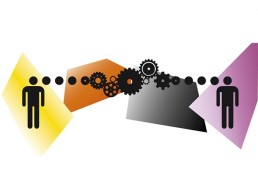
Substance over Style
“Most of us are not designing. We are styling, because we’re using imagery from the past.” This is one of many strong statements from Karim Rashid, taken from his thought provoking keynote talk at the ARC Show, part of The May Design Series.
These days it seems as though we have forgotten what design really means. We are using imagery of the past to design new products, meaning we use old paradigms to design new solutions. And yet when we do this we are not designing, we are merely styling. This results in products that look different and new, but in reality do nothing to help us solve the problems and obstacles we face. Nor do they enable us to have better experiences and interactions. Styling is about the need for products to be compelling for customers, not about solving fundamental problems with better products. Yet, too often, this is a large part of what so many companies call innovation. Companies seem to be in a race with their competitors to be fastest with new product launches, shouting just a bit harder about how great their products are and telling us how we all need to use their technology. But using new technologies does not automatically mean products are innovative. We need to understand that, while technology used the right way can enable the creation of brilliantly designed products, it is good design itself that is the main prerequisite to genuine innovation. For some reason the lighting industry is a boxed-in little world that designs around technology. This is what’s comfortable as it is what people in the industry have done for a long time. The problem is that this approach will not lead to the changes that are needed.
Many times I’ve heard companies and even so-called ‘designers’ present new products by touting them as great design. I’ve lost count on the number of new LED outdoor (street) lights, for example, that do the same thing as the ‘old’ lighting solutions. The only difference is the use of a new energy saving technology – LED. It doesn’t make the experience for everyone occupying that space any better. In some cases it makes the experience even worse. Think about our over-lit cities; these days it’s a rare thing to be able to see the natural beauty of thousands of stars that fill up our night sky.
Using safety as a way to tap into the psychology of fear in a bid to sell more products is also a bad move and won’t result in meaningful progress. It’s a missed opportunity as LED and OLED are technologies that can enable us to design better, meaningful solutions. For me and other industrial designers, these technologies offer amazing opportunities to design great products that are at the core of different lighting solutions. Saving energy is important, but it’s only a small part of what we need to consider when designing.
How does facade LED lighting full of flashy, moving advertising make our lives any better and our experiences more satisfying? If it means we have to have advertising on our buildings just to pay for these LED installations, we are doing something profoundly wrong as human beings. It means that we are just ending up with more stuff that screams for our attention. We have too much visual pollution already.
If there is one big lesson to take from the ARC Show and the talk Karim Rashid gave there, it is to understand how important it is to look at the broader design community, designers and design driven companies for a sense of direction that will propel the lighting industry into the place it wants to be.
The problem is that the visual appearance alone can be compelling enough for customers to buy a product, leaving them with stuff they don’t want or use after only a short time. Instead companies have a chance to be great, to take risks, to change things, to care. Be confident that customers and users will want to have your products. If a product is good, but not great, start over. It is that simple and, at the same time, that hard. For us as designers one of the challenges is to change the relationship and type of interactions we as humans have with technology and products. Outside the lighting industry there are some great designers and companies that have done this successfully; Apple, in the ways we interact and use consumer electronics, Nest with thermostats, VANMOOF with bicycles and Vitsoe with furniture. Lighting is so important in our everyday life, for the feel of everything around us – “The root of aesthetic is feeling,” as Karim Rashid put it1 – so how can we accept not to do better? We should start over. Start with a blank sheet, rethink and re-imagine the way we design products and solutions.
Making changes and executing them is scary, unpredictable and subject to failure. Well, embrace failure, because it is the best route to achieving success. We need to start asking questions like; why does this solution work this way? Why does a product have this look and feel? And how can it be better? Unless we take this design driven approach, we are in deep trouble. We need to stop designing the same things, restyled and repackaged. We need new structures and better-designed products. To start doing this, the lighting industry could do worse than looking outside its own industry. That is when innovation can really happen.
Citations: 1 – Karim Rashid, May Design Series keynote speech, ‘Analog vs Digital’.
Thomas Wensma is founder of Ambassador Design.
info@thomaswensma.nl
twitter.com/thomaswensma
www.thomaswensma.com



